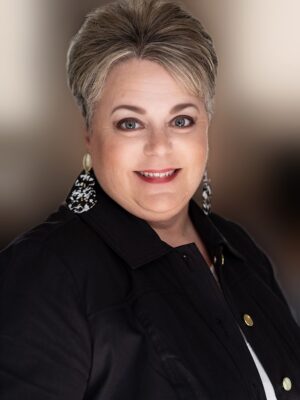
Humana finds formula for senior-focused care – MedCity News
 Humana has been rolling out a model for primary care centers designed to accommodate the growing number of senior citizens in the U.S. Staffed by integrated care teams, the centers offer a holistic approach that addresses both the medical and social needs of patients.
Humana has been rolling out a model for primary care centers designed to accommodate the growing number of senior citizens in the U.S. Staffed by integrated care teams, the centers offer a holistic approach that addresses both the medical and social needs of patients.
“Those needs are increasingly complex, with many seniors facing multiple diagnoses and barriers to high-quality care,” said Reneé Buckingham, president of Humana’s Primary Care Organization.
“We believe that it’s important to develop a care model that is built around the unique needs of seniors to really support them in the aging process and to allow them to achieve their best health, whatever that might be for them, as they define it,” Buckingham said.
Humana currently operates more than 220 of its dedicated primary care centers under the CenterWell Senior Primary Care and Conviva Care Center brands, and the provider is engaged in a significant expansion under a $1.2 billion joint venture with private equity firm Welsh Carson Anderson & Stowe. Unveiled earlier this year, the venture plans to open roughly 100 new senior-focused care centers between 2023 and 2025.

Reneé Buckingham
The growth is being driven, in part, by the need for care, Buckingham said. Roughly 30% of seniors have two or more chronic conditions, she said. Baby boomers also will expect a more customized approach to care than the traditional transactional model.
The senior-focused centers also respond to the spread of value-based care, a model that is increasingly prevalent in the world of Medicare Advantage. Under the model, Humana centers, which serve members of Medicare Advantage health plans from many different companies, are reimbursed at a fixed rate per patient rather than the traditional fee-for-service approach. The goal is to improve outcomes, while ratcheting down the overall cost of care.
“We are incentivized in that kind of economic model to really drive to the best outcome and to be as efficient and effective as possible,” Buckingham said.
The centers utilize a team approach, enabling the delivery of services that are not typically covered in the traditional fee-for-service model. In addition to primary care physicians, the integrated care teams include nurse practitioners, registered nurses, social workers and even clinical pharmacists. By working together, team members can address not only the medical needs of their patients, but also the barriers that might stand in the way of good health, such as food insecurity or lack of transportation, known as social determinants of health.
In fact, CenterWell and Conviva have located a significant portion of their newer centers in lower-income areas, where such barriers to care are often the highest.
“In these communities, many seniors have gone without adequate access to primary care for years,” Buckingham said. “And, in some cases, they’ve never had access to primary care. They’ve had to use emergency rooms, for example, as their destination for care. And so, we wanted to not only bring a care model that is uniquely designed around the needs of seniors, but we also wanted to bring new resources to communities.”
The resources come to life in numerous ways.
A patient with diabetes, for example, may raise concerns about paying for insulin, Buckingham said. “That allows our pharmacists and our social workers to work together to see if there are programs available that might help defer the cost of that insulin.”
When a doctor refers a patient to a specialist, the team follows up to ensure the appointment is made and the patient can get to the specialist. If needed, the team may even recommend a broker who can help find a Medicare Advantage plan with transportation benefits.
“Those are the kinds of things that we’re able to invest in,” Buckingham said.
Because they are surrounded by a full-service care team, the center’s physicians can focus on the medical needs of their patients. They turn their attention not just to immediate medical needs, but also to the indicators of approaching or worsening problems. Physicians can work with pre-diabetic patients, for example, to suggest behavioral changes that can check the disease’s advance.
“Primary care for seniors is really about early disease identification and detection, and a focus on slowing down the disease progression such that people have the opportunity to live longer, healthier lives,” Buckingham said.
The focus on seniors is evident in the physical design of the centers themselves. Ranging in size from 6,000 to 8,000 square feet, the centers feature wider hallways and doors to accommodate wheelchairs and walkers. Exam rooms, meanwhile, boast specially designed examination tables – called Brewer chairs – that are more accessible than the standard table.
The centers also include community rooms. They serve as venues for patient education but also as forums for social activities, countering the potential for social isolation among seniors.
“We’ve been really thoughtful about the challenges that we need to address,” Buckingham said, adding that the centers also incorporate artwork customized to the communities where they are located.
As it builds out its network of senior-focused primary care centers, Humana has been investing heavily in culture and training. Among the keys to success is a leadership structure that pairs physician and administrative leaders for each center. They are equally accountable for operational and clinical results, Buckingham said.
“We’ve worked really hard in the development of a clinical culture that is really driven by physicians leading physicians and holding physicians accountable, partnered with an administrative leader all the way down from the top of the organization,” Buckingham said.
Photo: izusek, Getty Images